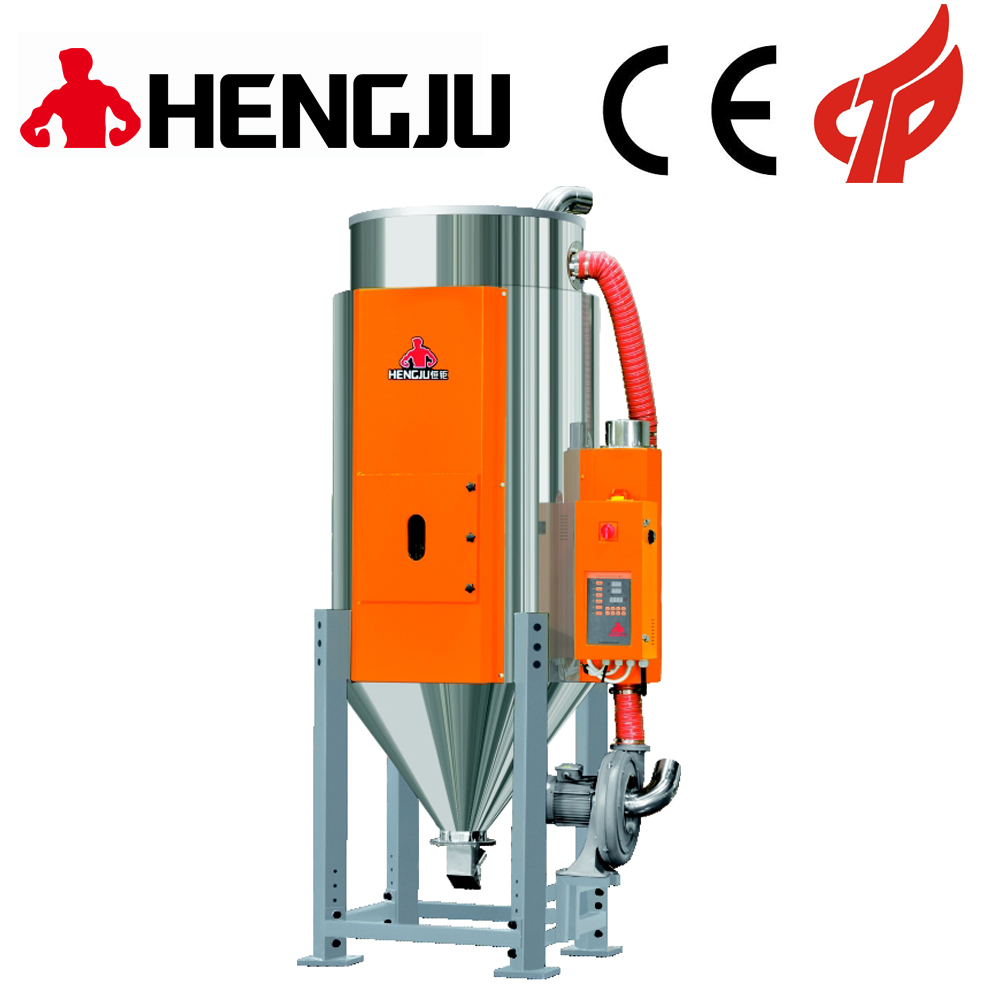The dehumidification dryer uses a fan to draw moist air into the machine and pass through the heat exchanger. At this time, the moisture in the air condenses into droplets and becomes dry air to be discharged outside the machine. This cycle reduces the indoor humidity. The dehumidification dryer is mainly used to dry plastics with strong hygroscopicity. The dehumidification dryer will dehumidify the low dew point air,... The dehumidification dryer uses a fan to draw the moist air into the machine and pass through the heat exchanger. The water is condensed into water droplets, which becomes dry air and is discharged out of the machine. This circulation reduces indoor humidity. Dehumidification dryers are mainly used to dry plastics with strong hygroscopicity. The dehumidification dryers send the dehumidified low dew point air into one or more standard drying hoppers to improve drying efficiency and shorten drying time. It adopts a multi-section honeycomb runner and an all-stainless steel double-layer down-blowing temperature-preserving hopper, integrating dehumidification, drying, and feeding. It has the advantages of fast and simple feeding, compact structure, strong and durable.
1. Features of dehumidification dryer:
1). Using PID to control the temperature, the temperature error is within 1 degree.
2). Equipped with multiple safety protections such as thermocouple segment alarm, high temperature alarm, and overload protection.
3). Double digital direct display set temperature and actual measured temperature.
4). The electric heater will be turned on automatically after power-on, and the fan will be turned off automatically after power-off.
5). Light touch switch control, one-key automatic power on.
6). The exhaust filter of hot air dryer equipment reduces pressure loss and prevents dust from flying and pollution.
Protect the surrounding environment.
2). Working principle of desiccant dryer:
1). The internal circulation of the dehumidifier: the operation of the compressor → the exhaust port discharges high temperature and high pressure
Gas → enter the condenser to cool → become a low temperature and high pressure gas → intercept the flow through the capillary → change
Turn into low-temperature and low-pressure liquid → evaporate and absorb heat through the evaporator → return to the compressor to become low-temperature and low-pressuregas. So it goes back and forth.
2). The external circulation of the dehumidifier: under normal startup → through the operation of the fan →
Moist air is sucked in from the air inlet → passes through the evaporator → the evaporator absorbs the moisture in the air
On the aluminum sheet → become dry air → pass through the condenser to dissipate heat → blow out from the air outlet.
With the widespread use of engineering plastics, dehumidifying dryers have gradually replaced traditional Integrated hot air dryer (oven).
3.The use of dehumidification dryer has the following four major benefits:
1). The water in the plastic raw materials can be taken away to eliminate the generation of bubbles and make the product reach The desired mechanical, electrical, dimensional stability and smooth appearance.
2). Prevent the production of defective products and the loss of returned goods, and greatly reduce the production of waste.
3). Because the dehumidification dryer uses very dry air to dehumidify, it can Shorten the drying time and save working hours.
4). The air pipeline of the desiccant dryer adopts a sealed circulation system and is equipped with a filter.
This is not affected by the outside climate and can prevent dust from causing pollution in the factory.
|
 +8613669807274
+8613669807274
 +8613669807274
+8613669807274 wto-btb@wto-btb.com
wto-btb@wto-btb.com Tel: +8613669807274
Tel: +8613669807274 SMS: +8613669807274
SMS: +8613669807274